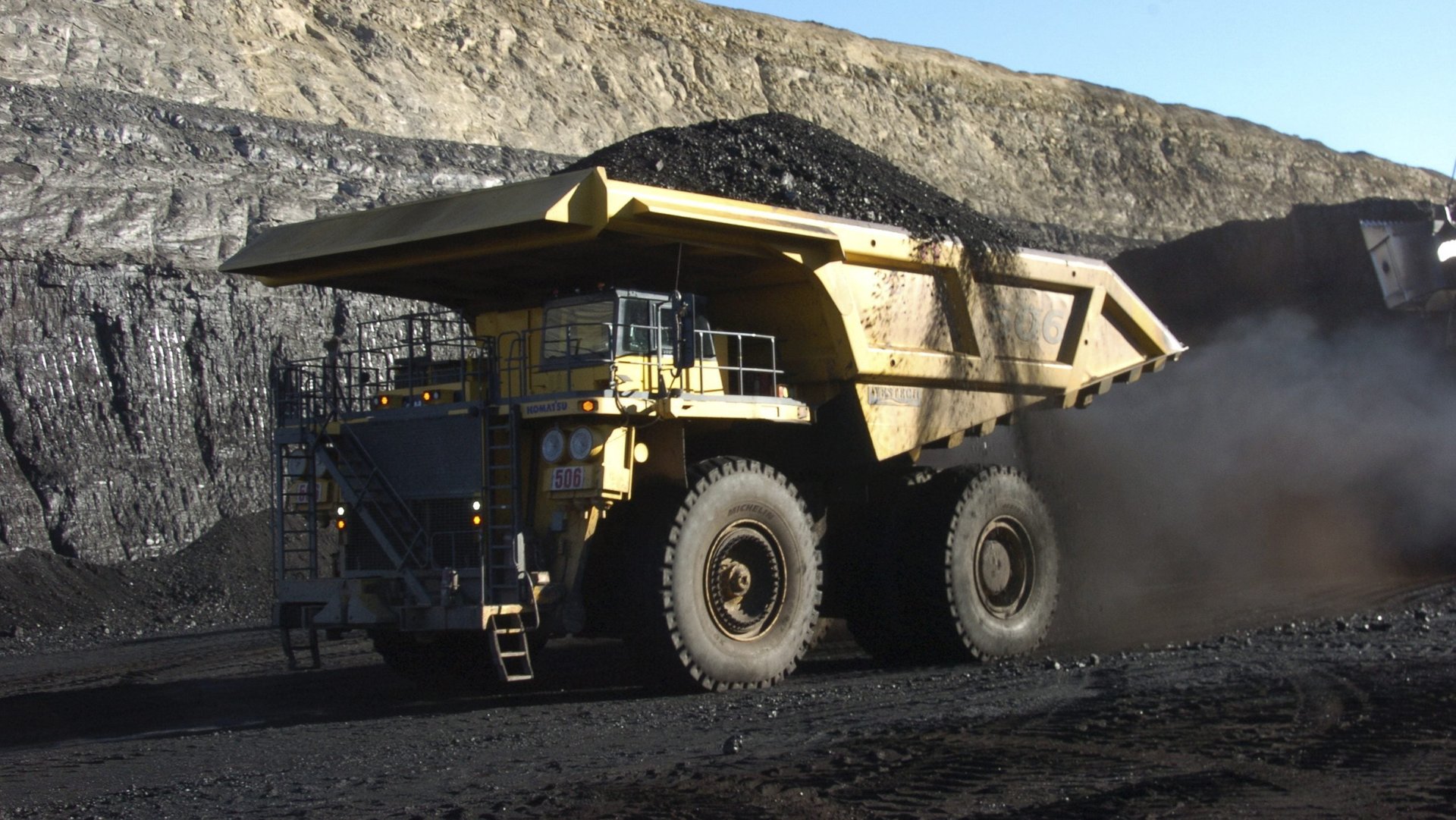How Big Coal infiltrated the Trump administration to put its stamp on climate policy
Many of the US’s biggest coal companies declared bankruptcy last year, after piling on debt during a series of mergers when coal prices were at a peak. The industry has been suffering for years, thanks to cheaper local natural gas, a federal government push for clean energy, and China’s slowing economy.


Many of the US’s biggest coal companies declared bankruptcy last year, after piling on debt during a series of mergers when coal prices were at a peak. The industry has been suffering for years, thanks to cheaper local natural gas, a federal government push for clean energy, and China’s slowing economy.
President Donald Trump’s executive order yesterday to start dismantling the Clean Power Plan, which limits power-plant carbon emissions, was “an end to the war on coal,” as he put it, and a rare victory for the industry. It’s also no coincidence. Coal executives supported and funded the Trump presidential campaign, and industry-backed lawyers and talking heads stocked his cabinet, even as the industry sputtered and thousands lost their jobs.
In July of last year, Robert Murray, CEO of Murray Energy, the largest coal-mining company in the US, blamed Barack Obama and the Environmental Protection Agency (EPA) for “virtually destroying” the industry. On Tuesday, he had a front seat at the signing of the executive order, and declared Trump’s action “wonderful, not just for the United States coal industry, our miners and their families,” but for America.
Here’s how Big Coal fought the Clean Power Plan and won.
One-study science
The only study the Trump administration cited in a briefing to explain its decision was conducted by NERA Economic Consulting (pdf) in 2015. The study, which says the Clean Power Plan makes electricity more expensive for consumers, has been criticized by economists (pdf) and scientists alike because it uses higher-than-normal estimates of the cost of solar and wind power, and doesn’t factor in the fact that these costs are also steadily falling.
The study was commissioned by the “American Coalition for Clean Coal Electricity,” a group that scientist watchdogs EPI define as a “coal-industry trade association working to increase the longevity of the coal industry.”
Inside team Trump
“The coal industry has a long history of collaborating with and supporting several of the people and institutions shaping the new administration’s energy and climate-change policy,” says Luke Hartig, the executive director of the National Journal’s Network Science Initiative, which analyzes people making government policy and the connections between them. (The National Journal is a sister publication to Quartz.)
Key among them is Myron Ebell, the Trump transition team leader for the EPA, who has been at the Competitive Energy Institute (CEI) since 1999. The institute opposes subsidies for clean energy, and “questions global warming alarmism, makes the case for access to affordable energy, and opposes energy-rationing,” according to its website.
Coal giants including Murray Energy (paywall) were big spenders at a CEI annual dinner, and Ebell said in 2015 he’d like to see more funding from coal companies:
Ebell’s CEI colleague Christopher Horner also joined the Trump EPA transition team. A long-time climate-change denier, Horner was lauded by coal industry CEOs in 2015 for his work at the Energy & Environment Legal Institute (E&E)—another group that works to discredit climate science—where he coined the word “Climategate” and sued to get the private emails of environmental scientists while accusing them of fraud. Horner personally was paid by Alpha Resources, one of the largest US coal companies, according to Alpha’s recent bankruptcy filings, the Intercept reported.
Another transition team member, David Schnare, was a three-decade-long employee of the EPA, then went to E&E where he became well known for suing universities for climate scientists’ personal emails.
Department of Energy head Rick Perry was a big supporter of the industry’s “Clean Coal Initiative” as the governor of Texas, and pushed to fast-track more coal plants in the state, after receiving over $600,000 in donations from the TXU, the utility company behind the plan. Suzie Jaworowski, the former head of government relations for Sunshine Coal and Trump’s campaign manager in Indiana, has also joined the energy department.
Deep pockets
Big-name donors from the coal industry include Joe Craft, the CEO of Alliance Resource Partners, who co-chaired a $1,000-per-plate fundraiser for Trump in Oklahoma last September, and gave a combined $1.85 million to pro-Trump and anti-Hillary Clinton super-PACs this year, according to Opensecrets, a non-partisan groups that tracks donations and lobbying funds. He was awarded with two seats on the inauguration platform.
Murray Energy donated $1.9 million during the presidential election. Bob Murray told Fox News Trump called him shortly after his election victory, and said “I love you, man.”
In fact, as the US’s largest coal companies hit hard times they continued to spend millions to fund politicians and lobbying groups hoping to turn the tide. Five of the top US companies that went bankrupt since 2015 have paid $100 million to lobbyists and politicians in the past decade (pdf, p. 1), according to a 2016 report from the Western Values Project, which represents residents of the Rocky Mountain states.
Despite the money spent, and the vows to dismantle clean power plant rules, few but Trump and a handful of mining companies are predicting that coal jobs are coming back, because the mining industry is automating and power generators are phasing out coal-burning plants.